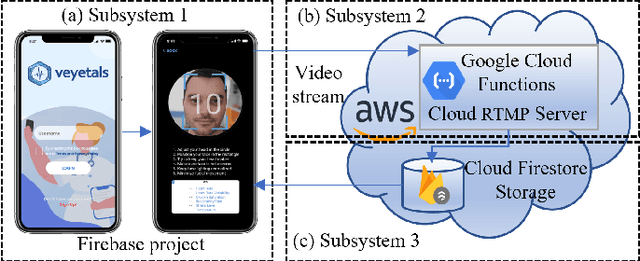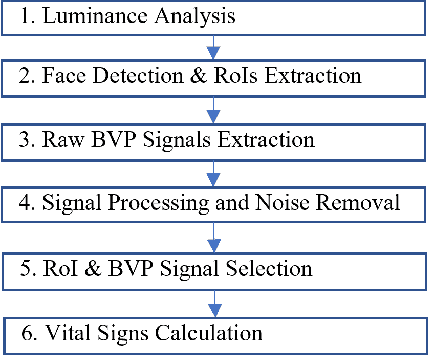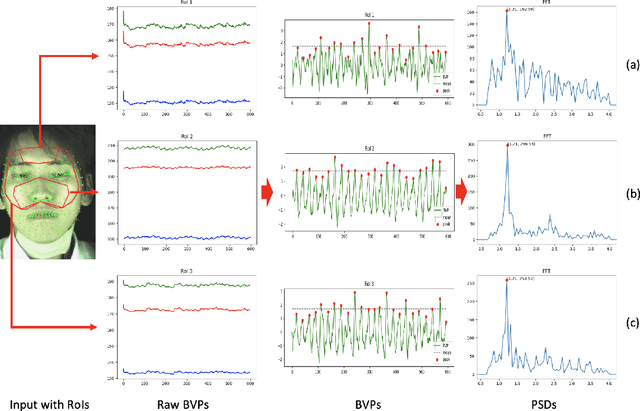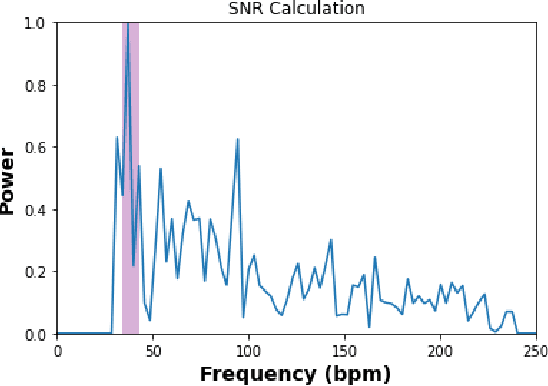Raihan Masroor
ReViSe: Remote Vital Signs Measurement Using Smartphone Camera
Jun 13, 2022



Abstract:Remote Photoplethysmography (rPPG) is a fast, effective, inexpensive and convenient method for collecting biometric data as it enables vital signs estimation using face videos. Remote contactless medical service provisioning has proven to be a dire necessity during the COVID-19 pandemic. We propose an end-to-end framework to measure people's vital signs including Heart Rate (HR), Heart Rate Variability (HRV), Oxygen Saturation (SpO2) and Blood Pressure (BP) based on the rPPG methodology from the video of a user's face captured with a smartphone camera. We extract face landmarks with a deep learning-based neural network model in real-time. Multiple face patches also called Region-of-Interests (RoIs) are extracted by using the predicted face landmarks. Several filters are applied to reduce the noise from the RoIs in the extracted cardiac signals called Blood Volume Pulse (BVP) signal. We trained and validated machine learning models using two public rPPG datasets namely the TokyoTech rPPG and the Pulse Rate Detection (PURE) datasets, on which our models achieved the following Mean Absolute Errors (MAE): a) for HR, 1.73 and 3.95 Beats-Per-Minute (bpm) respectively, b) for HRV, 18.55 and 25.03 ms respectively, and c) for SpO2, a MAE of 1.64 on the PURE dataset. We validated our end-to-end rPPG framework, ReViSe, in real life environment, and thereby created the Video-HR dataset. Our HR estimation model achieved a MAE of 2.49 bpm on this dataset. Since no publicly available rPPG datasets existed for BP measurement with face videos, we used a dataset with signals from fingertip sensor to train our model and also created our own video dataset, Video-BP. On our Video-BP dataset, our BP estimation model achieved a MAE of 6.7 mmHg for Systolic Blood Pressure (SBP), and a MAE of 9.6 mmHg for Diastolic Blood Pressure (DBP).
 Add to Chrome
Add to Chrome Add to Firefox
Add to Firefox Add to Edge
Add to Edge